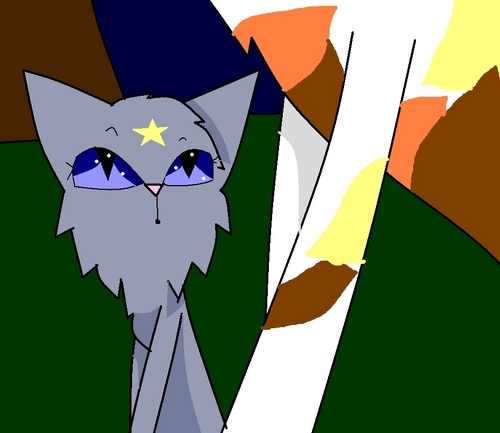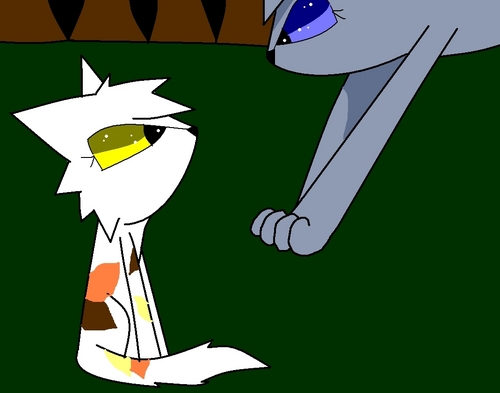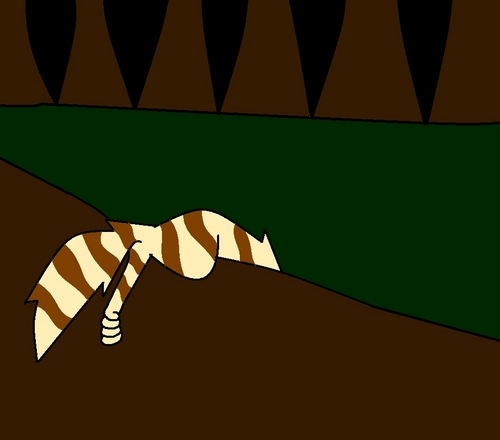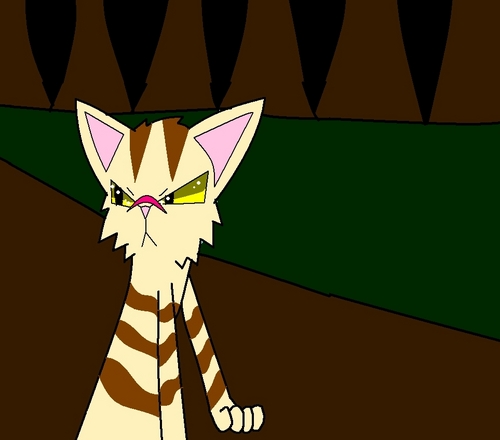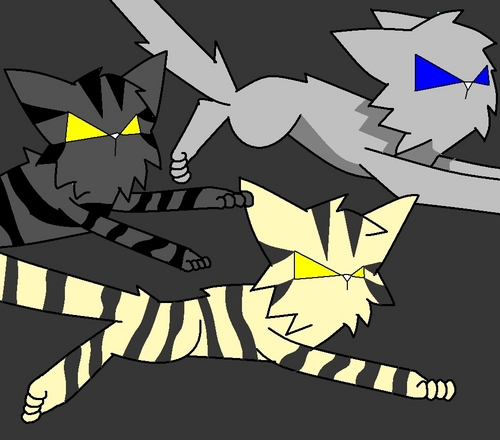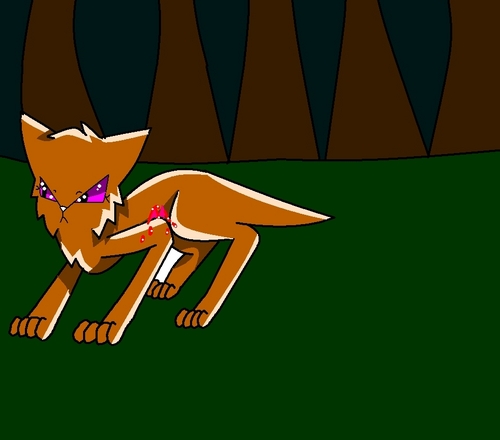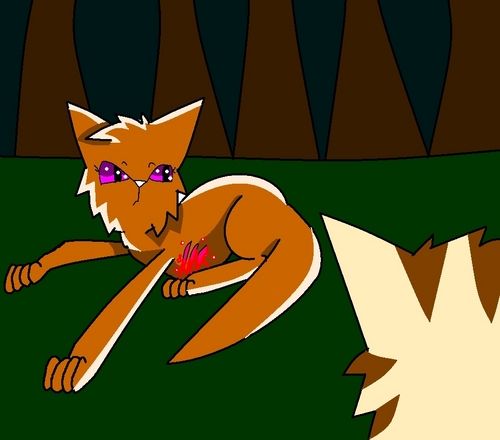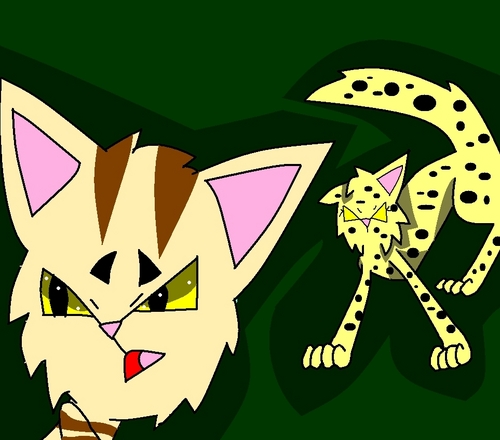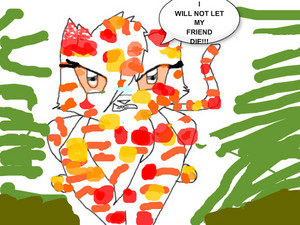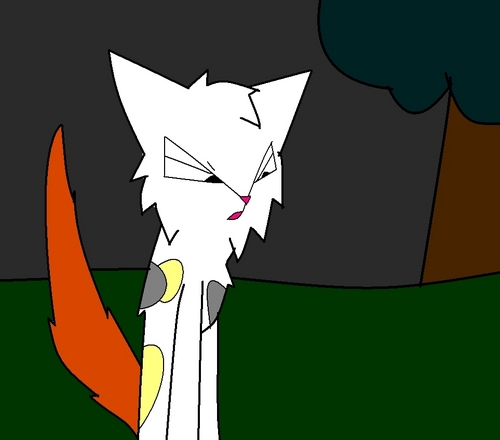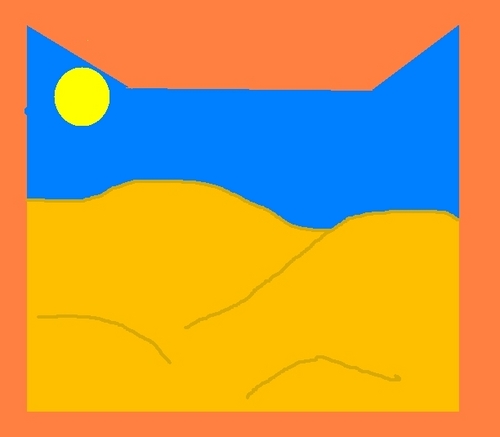ALDER:
Reduces swelling and prevents infection when chewed and applied to a wound. May also be chewed by a cat with a toothache to reduce pain, swelling, and aid in preventing complications.
ALFALFA:
Used to prevent tooth decay.
ALOE VERA:
Use the gel inside of leaves to cure skin problems or burns.
ASH (TREE):
New shoots are to be eaten, and chewed and applied to the bit of an Adder or Viper to stave off the effects of its poisoned bite.
Keys (seeds) of the Ash tree may also be consumed to fight the pain caused by a stitch in the side.
BASIL:
Apply to the paw to treat any paw problems.
BORAGE:
Leaves and Roots should be consumed to stave off fevers. Seeds and leaves should be consumed by the nursing Queen to increase available milk.
Borage should never be used dried, only green. Can be easily identified by its star shaped flowers. Small plants with pink or blue flowers and hairy leaves.
BRAMBLE TWIGS:
chew this to a fine syrup. It helps to sleep.
BROOM:
Not commonly used. Used in poultices from broken legs.
BURDOCK:
Leaves may be chewed and applied to wounds that are clear of infection to speed healing.
Roots may be chewed and applied to a wound to draw infection from it. Especially good for rat bites. Tall stemmed thistle with a sharp smell and dark leaves.
CATCHWEED:
Burrs can be used to help hold treatment onto a cat.
CATMINT:
Leaves and Flowers can be used to relieve congestion and coughs. Used to counter greencough and whitecough. A leafy and delicious-smelling plant. They are rarely found in the wild, and are mostly found in Twoleg gardens. (white cough)
CELADINE:
Used to strengthen weak eyes.
CHAMOMILE:
Leaves and Flowers may be consumed to sooth a cat and add to their physical strength.
CHERVIL:
The juice of the leaves are used for infected wounds, and chewing the roots helps with bellyache. A sweet smelling plant with large, spreading, leafy, fernlike leaves and small white flowers.
CHICKWEED:
If there is no catmint around, it is a good substitute to counter greencough.
COBWEBS:
Gathered and pressed into wounds to slow or stop bleeding. Generally only used with wounds that risk bleeding heavily as they can cause increased risk of infection. Also used to bind broken bones.
COLTSFOOT:
A flowering, dandelion-like plant with yellow or white flowers. The leaves are chewed into a pulp, and given to cats with difficulty breathing or a cough. It also can be used to treat kitten-cough, as well as cracked or sore pads.
COMFREY:
Large leaves and small, bell-shaped flowers, which range in color from pink, white, or purple. Its fat, black-colored roots, when chewed into a poultice, can be used to repair broken bones or to soothe wounds.
DAISY LEAVES:
Daisy Leaves are thick, dark green, oval shaped leaves. Chewed into a paste, it can help aching joints.
DANDELIONS :
The white liquid inside the stem is used for bee stings. Its roots can also be chewed to act like poppy seeds.
DEATHBERRY (DEADLY NIGHT SHADE) and HOLLYBERRIES:
Berries, or any other part of the plant, when consumed will kill the cat who swallows if they are not given immediate help, and even then they may not always be saved.
DOCK:
The leaf is chewed and applied to scratches to soothe them. Also can make a cat's fur slippery to help her out of tangles such as in a bramble bush.
DRIED OAK LEAF:
Used to stop infections.
ECHINACIA:
Used to ease infection.
FERNS:
Used to clean out wounds.
FEVERFEW:
Leaves can be used to reduce fever, in addition to being consumed to aid against colds and stomach ailments.
GOLDENROD:
The poultice of this is for healing wounds.
HEATHER FLOWER:
It can be included in herbal mixtures, to make it easier to swallow.
HONEY:
Used to sooth the throat. Particularly good for smoke inhalation. Also helps cats swallow other medicines.
HORSETAIL:
The leaves are chewed up and applied to infected wounds. A tall, bristly-stemmed plant that grows in marshy areas, like ShadowClan’s marshes near the island in the lake territories.
JUNIPER:
Juniper berries grow on a bush with dark green, spiky leaves. The berries are purple in color, and can soothe bellyaches, give strength, and help troubled breathing. It is also used to help calm cats.
LAMB’S EAR:
Used with Ragwort to help an exhausted or weakened cat.
LAVENDER:
Leaves & flowers are particularly good when eaten for easing pains in head and throat, and curing fever. Inhaling the scent of fresh flowers can also calm the nerves. A small, purple, flowering plant that cures fever and chills.
MALLOW:
use to soothe the belly. The leaves are best collected at sunhigh, when they are dry.
MARIGOLD:
Leaves and Flowers should be consumed to relieve chills.
Leaves and Petals can be chewed and placed on wounds to prevent infection. A low-growing flower that is bright orange or yellow in color. The petals or leaves can be chewed into a pulp and applied to wounds as a poultice to stop infection. It could be used to treat rat bites, but it's sometimes not strong enough.
MOUSEBILE:
Bile from the liver of the common mouse may be harvested and used to kill stubborn fleas and ticks.
MUD:
Soothes hornet/ bee stings. Apply and let it dry and fall off on its own, taking the stinger with it.
NETTLE SEED:
Like yarrow, can be used if a cat has swallowed poison.
PARSLEY:
Used to stop the flow of a queen's milk.
POPPY (WILD):
Small black seeds that are shaken out of a dried poppy flower head. They can put a cat to sleep, or soothe shock and distress, but is not recommended to nursing queens. They are given by wetting the paw, pressing on them, causing them to stick to the paw, and then having the sick or injured cat lick them off. Another method is to place them on a leaf, and have the sick or injured cat lick them off from there. They also help soothe pain.
RAGWORT:
Used with juniper berries to treat aching joints or other muscle soreness. Crushed and mixed into a poultice with juniper berries, it can help aching joints. It can also be used to keep a cat's strength up.
RASPBERRY LEAVES:
A herb used in kittings. It could be a painkiller, or to help stop bleeding during the kitting.
RUSH:
This herb is used to bind broken bones. It has long narrow leaves and lavender colored head stalks.
STINGING NETTLE:
The leaves are applied to reduce swelling, while the seeds are ingested by those who have swallowed poison.
SNAKEROOT:
Used to counter poison. Snake bites, too.
TANSY:
Leaves, flowers, and stems should be eaten together to remove worms.
Leaves may be chewed to relive joint aches.
Flowers should be consumed to remove coughs.
Pregnant Queens should NEVER be given tansy, for it causes miscarriages. The tansy plant has round, yellow leaves, and a very sweet and strong smell, making it good at disguising a cat's scent. It is used for curing coughs, but must be eaten in small doses.
THYME:
Should be consumed to calm the anxious cat, or to aid in brining restful sleep. This herb can be eaten to calm nervousness, anxiety, and cats that are in shock.
TREVELING HERBS:
Traveling Herbs consists of sorrel, daisy, chamomile and burnet. Chamomile strengthens hearts, and calms cats. The other herbs are unknown.
WATER MINT:
Used to help cure bellyaches. A green, leafy plant found in streams or damp earth. Usually chewed into a pulp and fed to cats with suffering from a bellyache.
WILLOW TREE:
Water from beneath the bark of the flowering willow may be dripped into the eyes to help clear blurriness of vision. It may also be applied to dry patches of skin to sooth itches.
Small amounts of Willow Bark may be consumed to ease pain, act against inflammation, and to ease diarrhea or fevers.
WILD GARLIC:
Rolling in a patch helps prevent infection. When rolled in, it can help prevent infection. Especially good for rat bites. Due to its strong smell, it is good at hiding the scent of a certain Clan, and disguising cats on raids.
WILLOW BARK:
This bark serves as a painkiller.
YARROW:
Entire plant should be consumed to induce vomiting.
Entire plant should be chewed and applied to wounds to relive pain and prevent infection. A flowering plant whose leaves can be made into a poultice, and applied to wounds to extract poison. Also will make a cat vomit. The ointment of yarrow can also be used to soften and help heal cracked paw pads.
YEW:
to make a cat vomit up poisons. Also another name for deathberries.
Reduces swelling and prevents infection when chewed and applied to a wound. May also be chewed by a cat with a toothache to reduce pain, swelling, and aid in preventing complications.
ALFALFA:
Used to prevent tooth decay.
ALOE VERA:
Use the gel inside of leaves to cure skin problems or burns.
ASH (TREE):
New shoots are to be eaten, and chewed and applied to the bit of an Adder or Viper to stave off the effects of its poisoned bite.
Keys (seeds) of the Ash tree may also be consumed to fight the pain caused by a stitch in the side.
BASIL:
Apply to the paw to treat any paw problems.
BORAGE:
Leaves and Roots should be consumed to stave off fevers. Seeds and leaves should be consumed by the nursing Queen to increase available milk.
Borage should never be used dried, only green. Can be easily identified by its star shaped flowers. Small plants with pink or blue flowers and hairy leaves.
BRAMBLE TWIGS:
chew this to a fine syrup. It helps to sleep.
BROOM:
Not commonly used. Used in poultices from broken legs.
BURDOCK:
Leaves may be chewed and applied to wounds that are clear of infection to speed healing.
Roots may be chewed and applied to a wound to draw infection from it. Especially good for rat bites. Tall stemmed thistle with a sharp smell and dark leaves.
CATCHWEED:
Burrs can be used to help hold treatment onto a cat.
CATMINT:
Leaves and Flowers can be used to relieve congestion and coughs. Used to counter greencough and whitecough. A leafy and delicious-smelling plant. They are rarely found in the wild, and are mostly found in Twoleg gardens. (white cough)
CELADINE:
Used to strengthen weak eyes.
CHAMOMILE:
Leaves and Flowers may be consumed to sooth a cat and add to their physical strength.
CHERVIL:
The juice of the leaves are used for infected wounds, and chewing the roots helps with bellyache. A sweet smelling plant with large, spreading, leafy, fernlike leaves and small white flowers.
CHICKWEED:
If there is no catmint around, it is a good substitute to counter greencough.
COBWEBS:
Gathered and pressed into wounds to slow or stop bleeding. Generally only used with wounds that risk bleeding heavily as they can cause increased risk of infection. Also used to bind broken bones.
COLTSFOOT:
A flowering, dandelion-like plant with yellow or white flowers. The leaves are chewed into a pulp, and given to cats with difficulty breathing or a cough. It also can be used to treat kitten-cough, as well as cracked or sore pads.
COMFREY:
Large leaves and small, bell-shaped flowers, which range in color from pink, white, or purple. Its fat, black-colored roots, when chewed into a poultice, can be used to repair broken bones or to soothe wounds.
DAISY LEAVES:
Daisy Leaves are thick, dark green, oval shaped leaves. Chewed into a paste, it can help aching joints.
DANDELIONS :
The white liquid inside the stem is used for bee stings. Its roots can also be chewed to act like poppy seeds.
DEATHBERRY (DEADLY NIGHT SHADE) and HOLLYBERRIES:
Berries, or any other part of the plant, when consumed will kill the cat who swallows if they are not given immediate help, and even then they may not always be saved.
DOCK:
The leaf is chewed and applied to scratches to soothe them. Also can make a cat's fur slippery to help her out of tangles such as in a bramble bush.
DRIED OAK LEAF:
Used to stop infections.
ECHINACIA:
Used to ease infection.
FERNS:
Used to clean out wounds.
FEVERFEW:
Leaves can be used to reduce fever, in addition to being consumed to aid against colds and stomach ailments.
GOLDENROD:
The poultice of this is for healing wounds.
HEATHER FLOWER:
It can be included in herbal mixtures, to make it easier to swallow.
HONEY:
Used to sooth the throat. Particularly good for smoke inhalation. Also helps cats swallow other medicines.
HORSETAIL:
The leaves are chewed up and applied to infected wounds. A tall, bristly-stemmed plant that grows in marshy areas, like ShadowClan’s marshes near the island in the lake territories.
JUNIPER:
Juniper berries grow on a bush with dark green, spiky leaves. The berries are purple in color, and can soothe bellyaches, give strength, and help troubled breathing. It is also used to help calm cats.
LAMB’S EAR:
Used with Ragwort to help an exhausted or weakened cat.
LAVENDER:
Leaves & flowers are particularly good when eaten for easing pains in head and throat, and curing fever. Inhaling the scent of fresh flowers can also calm the nerves. A small, purple, flowering plant that cures fever and chills.
MALLOW:
use to soothe the belly. The leaves are best collected at sunhigh, when they are dry.
MARIGOLD:
Leaves and Flowers should be consumed to relieve chills.
Leaves and Petals can be chewed and placed on wounds to prevent infection. A low-growing flower that is bright orange or yellow in color. The petals or leaves can be chewed into a pulp and applied to wounds as a poultice to stop infection. It could be used to treat rat bites, but it's sometimes not strong enough.
MOUSEBILE:
Bile from the liver of the common mouse may be harvested and used to kill stubborn fleas and ticks.
MUD:
Soothes hornet/ bee stings. Apply and let it dry and fall off on its own, taking the stinger with it.
NETTLE SEED:
Like yarrow, can be used if a cat has swallowed poison.
PARSLEY:
Used to stop the flow of a queen's milk.
POPPY (WILD):
Small black seeds that are shaken out of a dried poppy flower head. They can put a cat to sleep, or soothe shock and distress, but is not recommended to nursing queens. They are given by wetting the paw, pressing on them, causing them to stick to the paw, and then having the sick or injured cat lick them off. Another method is to place them on a leaf, and have the sick or injured cat lick them off from there. They also help soothe pain.
RAGWORT:
Used with juniper berries to treat aching joints or other muscle soreness. Crushed and mixed into a poultice with juniper berries, it can help aching joints. It can also be used to keep a cat's strength up.
RASPBERRY LEAVES:
A herb used in kittings. It could be a painkiller, or to help stop bleeding during the kitting.
RUSH:
This herb is used to bind broken bones. It has long narrow leaves and lavender colored head stalks.
STINGING NETTLE:
The leaves are applied to reduce swelling, while the seeds are ingested by those who have swallowed poison.
SNAKEROOT:
Used to counter poison. Snake bites, too.
TANSY:
Leaves, flowers, and stems should be eaten together to remove worms.
Leaves may be chewed to relive joint aches.
Flowers should be consumed to remove coughs.
Pregnant Queens should NEVER be given tansy, for it causes miscarriages. The tansy plant has round, yellow leaves, and a very sweet and strong smell, making it good at disguising a cat's scent. It is used for curing coughs, but must be eaten in small doses.
THYME:
Should be consumed to calm the anxious cat, or to aid in brining restful sleep. This herb can be eaten to calm nervousness, anxiety, and cats that are in shock.
TREVELING HERBS:
Traveling Herbs consists of sorrel, daisy, chamomile and burnet. Chamomile strengthens hearts, and calms cats. The other herbs are unknown.
WATER MINT:
Used to help cure bellyaches. A green, leafy plant found in streams or damp earth. Usually chewed into a pulp and fed to cats with suffering from a bellyache.
WILLOW TREE:
Water from beneath the bark of the flowering willow may be dripped into the eyes to help clear blurriness of vision. It may also be applied to dry patches of skin to sooth itches.
Small amounts of Willow Bark may be consumed to ease pain, act against inflammation, and to ease diarrhea or fevers.
WILD GARLIC:
Rolling in a patch helps prevent infection. When rolled in, it can help prevent infection. Especially good for rat bites. Due to its strong smell, it is good at hiding the scent of a certain Clan, and disguising cats on raids.
WILLOW BARK:
This bark serves as a painkiller.
YARROW:
Entire plant should be consumed to induce vomiting.
Entire plant should be chewed and applied to wounds to relive pain and prevent infection. A flowering plant whose leaves can be made into a poultice, and applied to wounds to extract poison. Also will make a cat vomit. The ointment of yarrow can also be used to soften and help heal cracked paw pads.
YEW:
to make a cat vomit up poisons. Also another name for deathberries.


